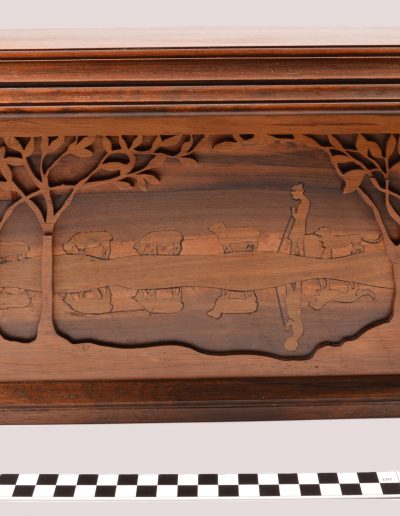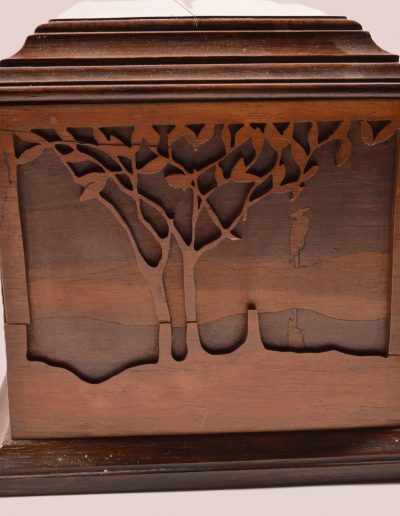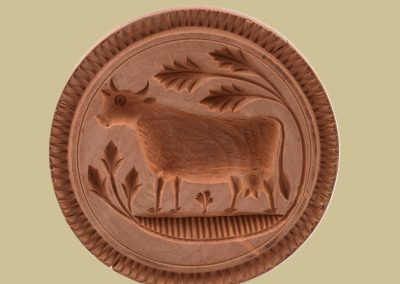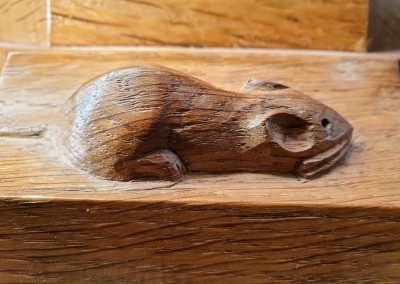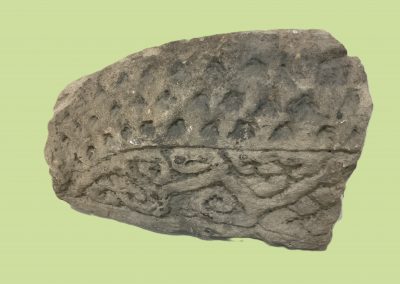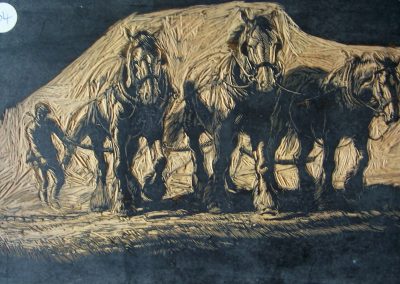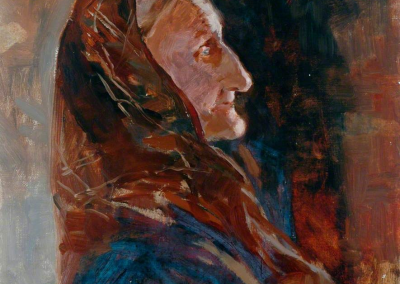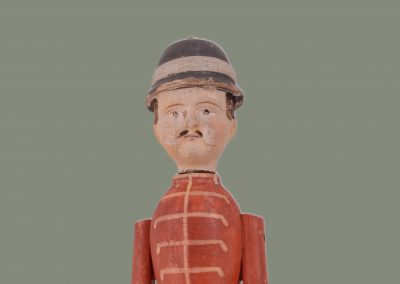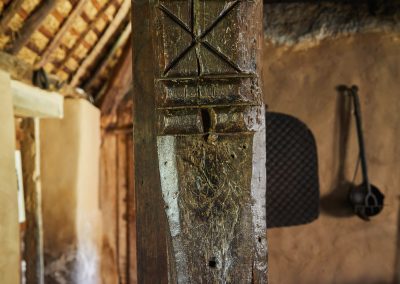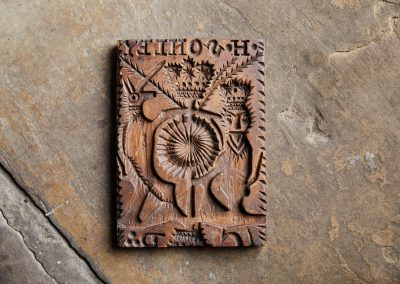Arts and Crafts Box designed by Beatrice Carpenter
Kiplin Hall and Gardens, North Yorkshire
This small decorative casket is an example of the Arts and Crafts movement which came to prominence during the late 19th century. This piece was the result of the work to promote craftsmanship done by Beatrice Carpenter in North Yorkshire. Made from rich rosewood and walnut, the hinged box features a moulded lid above intricately designed marquetry panels.
The front panel depicts a pastoral scene, with a shepherd and his flock. You can see that this has been overlaid with fretwork trees, and would have involved quite intricate and technical woodworking skills.
But who made the casket?
The box was made to a design by Beatrice Carpenter, but it was a local man or men attending her carpentry class as part of the Home Arts and Industries Association (HAIA) who actually constructed it.
A workshop, held in Bolton-on-Swale, was part of Carpenter’s efforts to revive traditional crafts, following an initiative inspired by the ideals of John Ruskin and William Morris. The casket was noted at the time, appearing in the July 1899 issue of The Studio magazine.
Beatrice and her husband, Admiral Walter Carpenter, attempted to fill their home with Arts and Crafts furnishings, many of which were created by local artisans under Beatrice Carpenter’s guidance.
A creative home
Beatrice and her husband, Admiral Walter Carpenter, attempted to fill their home with Arts and Crafts furnishings, many of which were created by local artisans under Beatrice Carpenter’s guidance.
At Kiplin Hall, the library in particular reflects these personal tastes and values. You can also see a number of examples of her designs.
Part of a wider movement
Carpenter’s activities were part of a wider movement among upper and middle class women to educate workers. They aimed to revive crafts including wood carving, metalwork and leatherwork, providing fulfilling and practical leisure activities and improving tastes. These women often organised and taught Saturday and evening classes in villages, towns and cities.
Activity – explore the story behind the casket with your group. Find out why it was made and discuss the design.
At a glance…
Explore more of the designs of Beatrice Carpenter at Kiplin Hall & Gardens. Click on them to enlarge.
Talking Points
Look closely at the design. What features suggest that this was a complex design?
The shepherd and sheep are also shown upside down on the casket. Why do you think this is?
If you owned this casket, would you use it for storing things, or would you keep it for decoration? Which of her pieces is your favourite?
During the Arts and Crafts movement, objects that were both functional and beautiful were greatly valued. Do you own any objects that have a clear function but that you think have also been designed to look attractive too? Do you think this is important?
Do you think the men who attended Beatrice Carpenter’s session appreciated her support? Why?
Why do you think the design continues around the sides of the box?
Nowadays, as in Carpenter’s time, the majority of the object we buy have been mass-produced. Why do you think it might be important to have unique, hand-made objects? Why don’t we buy more of them?
The image of a shepherd and his flock is sometimes seen as a religious symbol, because Jesus called himself ‘The Good Shepherd’ in the Gospel of John. Do you think the box could refer to that story? What else could the decorative image suggest to you? Do you like it?
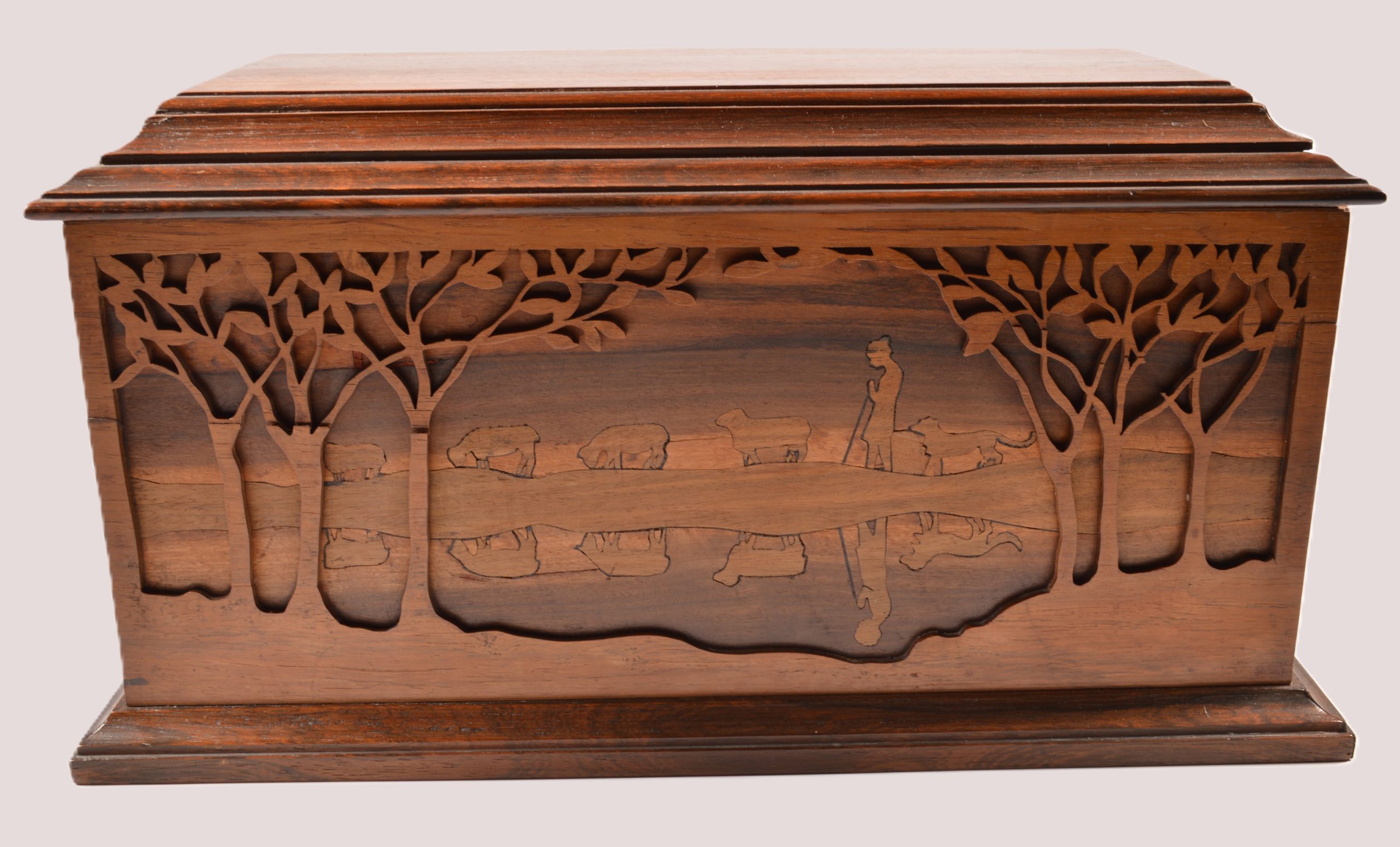
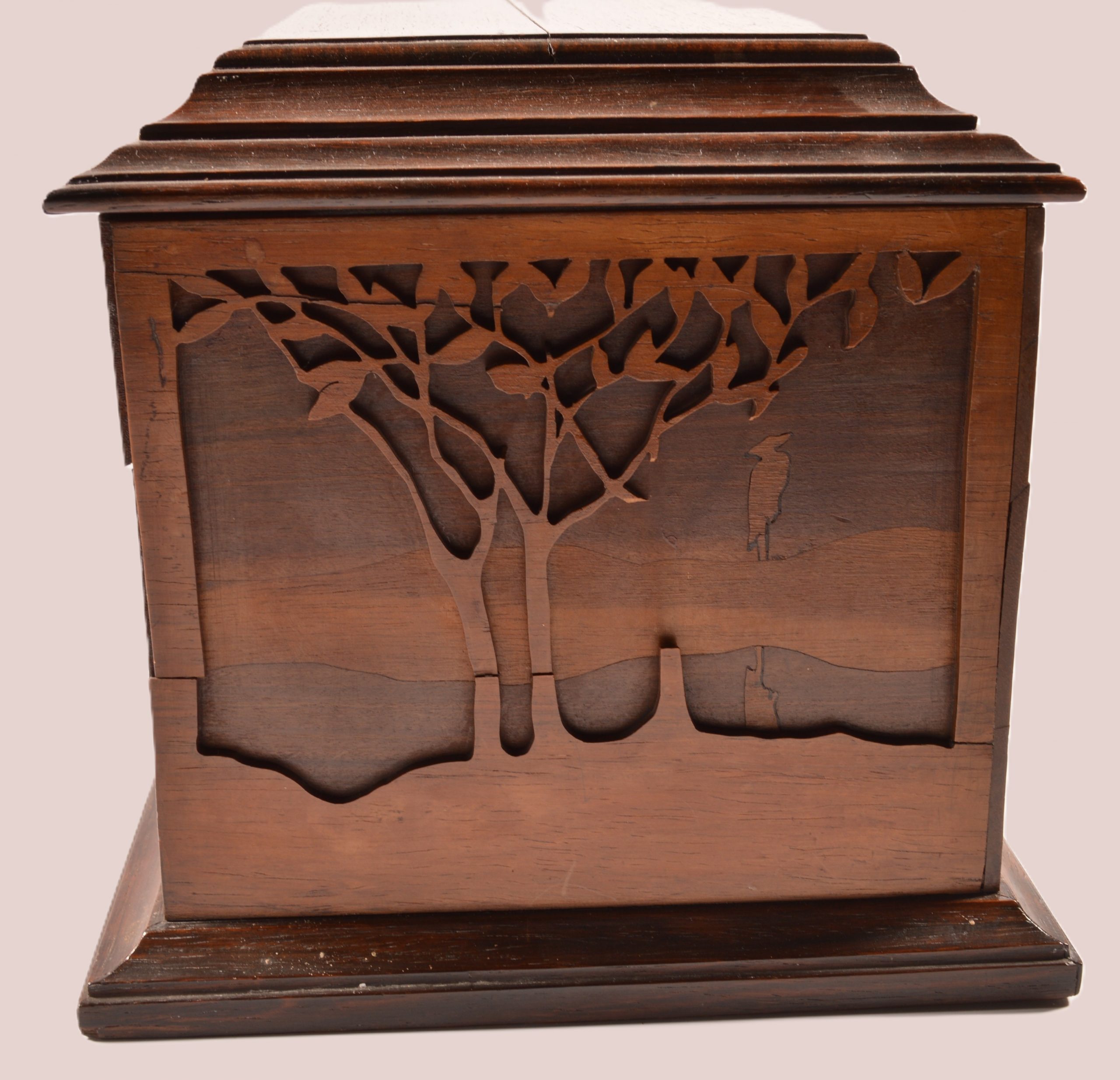
In the classroom
Hoteat – Interview a student in role as one of the people who attended Carpenter’s classes. What attracted them to the class?
What do they think of Beatrice Carpenter? How do they intend to use their new skills?

Hands on History
Discover more about Kiplin Hall and Gardens, or pay them a visit to see Beatrice Carpenter’s furniture and explore the library.
Museum Location
Explore more carved objects

